Spring-Data-Jpa使用总结

参考资源列表
- 官方文档: https://docs.spring.io/spring...
- 《Spring Data JPA入门到精通》
前言
JPA 是 Java Persistence API 的简称,是 Spring 在 Hibernate 的基础上进行的二次封装框架,为了更好更方便的融入 Spring 大家庭,同时也提供了一些 Hibernate 没有的特性,与其他ORM框架一起构成 SpringData ,统一封装了ORM层,使开发人员使用起来更加方便快捷。
备注:本文所有代码都是基于SpringBoot 2.1.5版本
JPA的使用
基本单表操作的使用
对于操作单表来说,jpa提供了非常方便使用的封装,我们只需要按规范编写Repository接口同时继承 JpaRepository 就可以享用jpa基本功能了。代码如下:
User实体:
package com.yizhu.entity;
import lombok.Builder;
import lombok.Data;
import lombok.ToString;
import javax.persistence.*;
import java.io.Serializable;
import java.util.List;
import java.util.Set;
@Entity
@Table(name = "t_user")
@Data
@Builder
public class User implements Serializable {
private static final long serialVersionUID = 1L;
@Id
@GeneratedValue(strategy = GenerationType.IDENTITY)
private Long id;
private String name;
private String password;
private Integer age;
private Integer sex;
}
repository接口:
package com.yizhu.repository;
import com.yizhu.entity.User;
public interface UserRepository extends JpaRepository<User, Long>{
}
下面看看jpa为我们提供了哪些默认操作单表数据的方法
package org.springframework.data.jpa.repository;
@NoRepositoryBean
public interface JpaRepository<T, ID> extends PagingAndSortingRepository<T, ID>, QueryByExampleExecutor<T> {
List<T> findAll(); // 查询全表数据
List<T> findAll(Sort var1); // 查询全表数据,支持排序
List<T> findAllById(Iterable<ID> var1); // 根据id字段查询所有匹配数据
<S extends T> List<S> saveAll(Iterable<S> var1); // 批量保存或更新数据
void flush(); // 刷新本地缓存到数据库
<S extends T> S saveAndFlush(S var1); // 保存或更新单挑数据及刷新本地缓存到数据库
void deleteInBatch(Iterable<T> var1); // 批量删除数据
void deleteAllInBatch(); // 批量删除全表数据
T getOne(ID var1); // 根据id查询一条匹配数据
<S extends T> List<S> findAll(Example<S> ar1); // Example方式的查询指定实体
<S extends T> List<S> findAll(Example<S> var1, Sort var2); // Example方式的查询指定实体并排序
}
package org.springframework.data.repository;
@NoRepositoryBean
public interface PagingAndSortingRepository<T, ID> extends CrudRepository<T, ID> {
Iterable<T> findAll(Sort var1); // 根据排序查询全表,返回类型是任意集合
Page<T> findAll(Pageable var1); // 根据分页参数分页查询
}
package org.springframework.data.repository;
@NoRepositoryBean
public interface CrudRepository<T, ID> extends Repository<T, ID> {
<S extends T> S save(S var1); // 保存或更新单条数据
<S extends T> Iterable<S> saveAll(Iterable<S> var1); // 批量保存或更新
Optional<T> findById(ID var1); // 根据id查询数据,返回类型是Optional
boolean existsById(ID var1); // 根据id判断数据是否存在
Iterable<T> findAll(); // 查询全表数据,返回类型为集合
Iterable<T> findAllById(Iterable<ID> var1); // 根据id集合查询数据
long count(); // 统计全表数据量
void deleteById(ID var1); // 根据id删除数据
void delete(T var1); // 删除单条数据
void deleteAll(Iterable<? extends T> var1); // 删除指定集合数据
void deleteAll(); // 删除全表数据
}
package org.springframework.data.repository.query;
public interface QueryByExampleExecutor<T> {
<S extends T> Optional<S> findOne(Example<S> var1); // 根据Example查询一条
<S extends T> Iterable<S> findAll(Example<S> var1); // 根据Example查询所有数据
<S extends T> Iterable<S> findAll(Example<S> var1, Sort var2); // 根据Example查询所有数据,并排序
<S extends T> Page<S> findAll(Example<S> var1, Pageable var2); // 根据Example分页查询
<S extends T> long count(Example<S> var1); // 根据Example统计
<S extends T> boolean exists(Example<S> var1); // 根据Example判断数据是否存在
}
除此之外,jpa提供了一套新的生成sql的机制,非常方便好用,jpa根据Repository接口的方法中的关键字、实体字段及出入参,自动生成sql,这种方式启动容器的时候就可以检查语法是否正确,简单使用例子如下:
package com.yizhu.repository;
import com.yizhu .entity.User;
import org.springframework.data.jpa.repository.EntityGraph;
import org.springframework.data.jpa.repository.JpaRepository;
import org.springframework.data.jpa.repository.JpaSpecificationExecutor;
import org.springframework.data.jpa.repository.Query;
import org.springframework.data.repository.query.Param;
import java.util.List;
public interface UserRepository extends JpaRepository<User, Long>{
/**
* 根据年龄查询用户信息
* @param age
* @return
*/
List<User> findAllByAge(Integer age);
/**
* 根据用户性别和所属组织名称查询用户信息
* @param userSex
* @param orgName
* @return
*/
List<User> findBySexAndOrg(@Param("sex") Integer sex, @Param("name") String name);
/**
* 根据用户名模糊查询
* @return
*/
List<User> findAllByNameLike(@Param("name") String name);
}
除了 find 、 By 、 And 之外,还有一些关键词,全部定义在 PartTree 、 Part 类,组装起来可以生成各种各样的sql,下面截取部分代码,感兴趣的同学可以打开源码去阅读
package org.springframework.data.repository.query.parser;
public class PartTree implements Streamable<PartTree.OrPart> {
private static final String KEYWORD_TEMPLATE = "(%s)(?=(//p{Lu}|//P{InBASIC_LATIN}))";
private static final String QUERY_PATTERN = "find|read|get|query|stream";
private static final String COUNT_PATTERN = "count";
private static final String EXISTS_PATTERN = "exists";
private static final String DELETE_PATTERN = "delete|remove";
private static final Pattern PREFIX_TEMPLATE = Pattern.compile("^(find|read|get|query|stream|count|exists|delete|remove)((//p{Lu}.*?))??By");
private final PartTree.Subject subject;
private final PartTree.Predicate predicate;
...
private static String[] split(String text, String keyword) {
Pattern pattern = Pattern.compile(String.format("(%s)(?=(//p{Lu}|//P{InBASIC_LATIN}))", keyword));
return pattern.split(text);
}
private static class Predicate implements Streamable<PartTree.OrPart> {
private static final Pattern ALL_IGNORE_CASE = Pattern.compile("AllIgnor(ing|e)Case");
private static final String ORDER_BY = "OrderBy";
private final List<PartTree.OrPart> nodes;
private final OrderBySource orderBySource;
private boolean alwaysIgnoreCase;
public Predicate(String predicate, Class<?> domainClass) {
String[] parts = PartTree.split(this.detectAndSetAllIgnoreCase(predicate), "OrderBy");
if (parts.length > 2) {
throw new IllegalArgumentException("OrderBy must not be used more than once in a method name!");
} else {
this.nodes = (List)Arrays.stream(PartTree.split(parts[0], "Or")).filter(StringUtils::hasText).map((part) -> {
return new PartTree.OrPart(part, domainClass, this.alwaysIgnoreCase);
}).collect(Collectors.toList());
this.orderBySource = parts.length == 2 ? new OrderBySource(parts[1], Optional.of(domainClass)) : OrderBySource.EMPTY;
}
}
...
}
private static class Subject {
private static final String DISTINCT = "Distinct";
private static final Pattern COUNT_BY_TEMPLATE = Pattern.compile("^count(//p{Lu}.*?)??By");
private static final Pattern EXISTS_BY_TEMPLATE = Pattern.compile("^(exists)(//p{Lu}.*?)??By");
private static final Pattern DELETE_BY_TEMPLATE = Pattern.compile("^(delete|remove)(//p{Lu}.*?)??By");
private static final String LIMITING_QUERY_PATTERN = "(First|Top)(//d*)?";
private static final Pattern LIMITED_QUERY_TEMPLATE = Pattern.compile("^(find|read|get|query|stream)(Distinct)?(First|Top)(//d*)?(//p{Lu}.*?)??By");
private final boolean distinct;
private final boolean count;
private final boolean exists;
private final boolean delete;
private final Optional<Integer> maxResults;
public Subject(Optional<String> subject) {
this.distinct = (Boolean)subject.map((it) -> {
return it.contains("Distinct");
}).orElse(false);
this.count = this.matches(subject, COUNT_BY_TEMPLATE);
this.exists = this.matches(subject, EXISTS_BY_TEMPLATE);
this.delete = this.matches(subject, DELETE_BY_TEMPLATE);
this.maxResults = this.returnMaxResultsIfFirstKSubjectOrNull(subject);
}
private Optional<Integer> returnMaxResultsIfFirstKSubjectOrNull(Optional<String> subject) {
return subject.map((it) -> {
Matcher grp = LIMITED_QUERY_TEMPLATE.matcher(it);
return !grp.find() ? null : StringUtils.hasText(grp.group(4)) ? Integer.valueOf(grp.group(4)) : 1;
});
}
...
private boolean matches(Optional<String> subject, Pattern pattern) {
return (Boolean)subject.map((it) -> {
return pattern.matcher(it).find();
}).orElse(false);
}
}
}
package org.springframework.data.repository.query.parser;
public class Part {
private static final Pattern IGNORE_CASE = Pattern.compile("Ignor(ing|e)Case");
private final PropertyPath propertyPath;
private final Part.Type type;
private Part.IgnoreCaseType ignoreCase;
...
public static enum Type {
BETWEEN(2, new String[]{"IsBetween", "Between"}),
IS_NOT_NULL(0, new String[]{"IsNotNull", "NotNull"}),
IS_NULL(0, new String[]{"IsNull", "Null"}),
LESS_THAN(new String[]{"IsLessThan", "LessThan"}),
LESS_THAN_EQUAL(new String[]{"IsLessThanEqual", "LessThanEqual"}),
GREATER_THAN(new String[]{"IsGreaterThan", "GreaterThan"}),
GREATER_THAN_EQUAL(new String[]{"IsGreaterThanEqual", "GreaterThanEqual"}),
BEFORE(new String[]{"IsBefore", "Before"}),
AFTER(new String[]{"IsAfter", "After"}),
NOT_LIKE(new String[]{"IsNotLike", "NotLike"}),
LIKE(new String[]{"IsLike", "Like"}),
STARTING_WITH(new String[]{"IsStartingWith", "StartingWith", "StartsWith"}),
ENDING_WITH(new String[]{"IsEndingWith", "EndingWith", "EndsWith"}),
IS_NOT_EMPTY(0, new String[]{"IsNotEmpty", "NotEmpty"}),
IS_EMPTY(0, new String[]{"IsEmpty", "Empty"}),
NOT_CONTAINING(new String[]{"IsNotContaining", "NotContaining", "NotContains"}),
CONTAINING(new String[]{"IsContaining", "Containing", "Contains"}),
NOT_IN(new String[]{"IsNotIn", "NotIn"}),
IN(new String[]{"IsIn", "In"}),
NEAR(new String[]{"IsNear", "Near"}),
WITHIN(new String[]{"IsWithin", "Within"}),
REGEX(new String[]{"MatchesRegex", "Matches", "Regex"}),
EXISTS(0, new String[]{"Exists"}),
TRUE(0, new String[]{"IsTrue", "True"}),
FALSE(0, new String[]{"IsFalse", "False"}),
NEGATING_SIMPLE_PROPERTY(new String[]{"IsNot", "Not"}),
SIMPLE_PROPERTY(new String[]{"Is", "Equals"});
private static final List<Part.Type> ALL = Arrays.asList(IS_NOT_NULL, IS_NULL, BETWEEN, LESS_THAN, LESS_THAN_EQUAL, GREATER_THAN, GREATER_THAN_EQUAL, BEFORE, AFTER, NOT_LIKE, LIKE, STARTING_WITH, ENDING_WITH, IS_NOT_EMPTY, IS_EMPTY, NOT_CONTAINING, CONTAINING, NOT_IN, IN, NEAR, WITHIN, REGEX, EXISTS, TRUE, FALSE, NEGATING_SIMPLE_PROPERTY, SIMPLE_PROPERTY);
public static final Collection<String> ALL_KEYWORDS;
private final List<String> keywords;
private final int numberOfArguments;
...
static {
List<String> allKeywords = new ArrayList();
Iterator var1 = ALL.iterator();
while(var1.hasNext()) {
Part.Type type = (Part.Type)var1.next();
allKeywords.addAll(type.keywords);
}
ALL_KEYWORDS = Collections.unmodifiableList(allKeywords);
}
}
}
可以看到单表操作的大部分需求jpa都为我们提供了现成的实现,但也支持我们使用 @Query 注解自定义查询sql,方便有sql基础的同学使用,sql可控性强。
package com.yizhu.repository;
import com.yizhu .entity.User;
import org.springframework.data.jpa.repository.EntityGraph;
import org.springframework.data.jpa.repository.JpaRepository;
import org.springframework.data.jpa.repository.JpaSpecificationExecutor;
import org.springframework.data.jpa.repository.Query;
import org.springframework.data.repository.query.Param;
import java.util.List;
public interface UserRepository extends JpaRepository<User, Long>{
/**
* 查询所有用户信息
* @return
*/
@Query(value = "from User u")
List<User> findAll();
/**
* 根据年龄查询用户信息
* @param age
* @return
*/
@Query(value = "select * from t_user u where u.user_age = ?1", nativeQuery = true)
List<User> findAllByAge(Integer age);
/**
* 根据用户性别和所属组织名称查询用户信息
* @param userSex
* @param orgName
* @return
*/
@Query(value = "select u from User u left join u.org o where u.userSex = :userSex and o.orgName = :orgName")
List<User> findUsersBySexAndOrg(@Param("userSex") Integer userSex, @Param("orgName") String orgName);
}
多表关联
@OneToOne 、 @OneToMany 、 @ManyToOne 、 @ManyToMany
@Entity
@Table(name = "t_user")
@NamedEntityGraph(name = "User.findUsers", attributeNodes = {@NamedAttributeNode("jobs"), @NamedAttributeNode("roles")})
@Data
@Builder
@NoArgsConstructor
@AllArgsConstructor
public class User implements Serializable {
private static final long serialVersionUID = 1L;
@ApiModelProperty(hidden = true)
@Id
@GeneratedValue(strategy = GenerationType.IDENTITY)
private Long id;
@ApiModelProperty(value = "用户名")
@Column(name = "user_name")
private String name;
@ApiModelProperty(value = "用户密码")
@Column(name = "user_password")
private String password;
@ApiModelProperty(value = "用户年龄")
@Column(name = "user_age")
private Integer age;
@ApiModelProperty(value = "用户性别")
@Column(name = "user_sex")
private Integer sex;
@ApiModelProperty(value = "所属组织id")
@Column(name = "org_id")
private Long orgId;
@ApiModelProperty(value = "用户信息")
@OneToOne
@JoinColumn(name = "id", updatable = false, insertable = false)
private UserInfo userInfo;
@ApiModelProperty(value = "用户所属组织")
@ManyToOne
@JoinColumn(name = "org_id", updatable = false, insertable = false)
private Organization org;
@ApiModelProperty(value = "用户角色")
@OneToMany
@JoinColumn(name = "user_id", referencedColumnName = "id", insertable = false, updatable = false)
@NotFound(action = NotFoundAction.IGNORE)
private Set<Role> roles;
@ApiModelProperty(value = "用户工作")
@ManyToMany
@JoinTable(
name = "t_user_job",
joinColumns = @JoinColumn(name = "user_id", referencedColumnName = "id"),
inverseJoinColumns = @JoinColumn(name = "job_id", referencedColumnName = "id")
)
@NotFound(action = NotFoundAction.IGNORE)
private Set<Job> jobs;
private Set<Role> roles; 和 private Set<Job> jobs; 不能用同时使用 List 集合代替,会报错 org.hibernate.loader.MultipleBagFetchException: cannot simultaneously fetch multiple bags: [com.yizhu.entity.User.jobs, com.yizhu.entity.User.roles]
动态查询
package com.yizhu.repository;
import com.yizhu.dto.UserQueryDto;
import com.yizhu.entity.Organization;
import com.yizhu.entity.User;
import org.springframework.data.jpa.domain.Specification;
import javax.persistence.criteria.Join;
import javax.persistence.criteria.JoinType;
import javax.persistence.criteria.Predicate;
import java.util.ArrayList;
import java.util.List;
import java.util.Optional;
public class UserSpecs {
public static Specification<User> listQuerySpec(UserQueryDto userQueryDto){
return (root, query, builder) -> {
List<Predicate> predicates = new ArrayList<>();
Optional.ofNullable(userQueryDto.getId()).ifPresent(i -> predicates.add(builder.equal(root.get("id"), i)));
Optional.ofNullable(userQueryDto.getName()).ifPresent(n -> predicates.add(builder.equal(root.get("name"), n)));
Optional.ofNullable(userQueryDto.getAge()).ifPresent(a -> predicates.add(builder.equal(root.get("age"), a)));
Optional.ofNullable(userQueryDto.getOrgId()).ifPresent(oi -> predicates.add(builder.equal(root.get("orgId"), oi)));
Optional.ofNullable(userQueryDto.getOrgName()).ifPresent(on -> {
Join<User, Organization> userJoin = root.join(root.getModel().getSingularAttribute("org", Organization.class), JoinType.LEFT);
predicates.add(builder.equal(userJoin.get("orgName"), on));
});
return builder.and(predicates.toArray(new Predicate[predicates.size()]));
};
}
}
package com.yizhu.service;
import com.yizhu.dto.UserQueryDto;
import com.yizhu.entity.User;
import com.yizhu.repository.UserRepository;
import com.yizhu.repository.UserSpecs;
import org.springframework.beans.factory.annotation.Autowired;
import org.springframework.stereotype.Service;
import java.util.List;
@Service
public class UserService {
@Autowired
private UserRepository userRepository;
public List<User> findUsersDynamic(UserQueryDto userQueryDto){
return userRepository.findAll(UserSpecs.listQuerySpec(userQueryDto));
}
}
审计功能使用
在启动类添加 @EnableJpaAuditing 注解表示开启jpa审计功能
package com.yizhu;
import org.springframework.boot.SpringApplication;
import org.springframework.boot.autoconfigure.SpringBootApplication;
import org.springframework.data.jpa.repository.config.EnableJpaAuditing;
@EnableJpaAuditing
@SpringBootApplication
public class DemoApplication {
public static void main(String[] args) {
SpringApplication.run(DemoApplication.class, args);
}
}
在需要使用审计功能的实体类添加 @EntityListeners(AuditingEntityListener.class) 注解
package com.yizhu.entity;
import lombok.Builder;
import lombok.Data;
import org.springframework.data.jpa.domain.support.AuditingEntityListener;
import javax.persistence.*;
import java.io.Serializable;
import java.util.Date;
@Entity
@Table(name = "t_role")
@Data
@Builder
@EntityListeners(AuditingEntityListener.class)
public class Role implements Serializable {
private static final long serialVersionUID=1L;
@ApiModelProperty(hidden = true)
@Id
@GeneratedValue(strategy = GenerationType.AUTO)
private Long id;
private String roleName;
@CreatedDate
private Date createTime;
@CreatedBy
private Long createId;
@LastModifiedDate
private Date updateTime;
@LastModifiedBy
private Long updateId;
}
实现AuditorAware接口,告诉容器当前登录人id
package com.yizhu.configuration;
import org.springframework.data.domain.AuditorAware;
import org.springframework.web.context.request.RequestContextHolder;
import org.springframework.web.context.request.ServletRequestAttributes;
import java.util.Optional;
public class UserAuditorAwareImpl implements AuditorAware<Long> {
@Override
public Optional<Long> getCurrentAuditor() {
// 从session中获取登录人id
ServletRequestAttributes servletRequestAttributes = (ServletRequestAttributes) RequestContextHolder.getRequestAttributes();
Long userId = (Long)servletRequestAttributes.getRequest().getSession().getAttribute("userId");
return Optional.of(userId);
}
}
ok,然后jpa就会根据 ID 和 Version 判断当前操作是更新还是新增数据,新增时会注入当前登录人id到标有 @CreateBy 注解的字段上,当前时间注入到标有 @CreateTime 注解字段上;更新时则注入到 @LastModifiedBy 和 @LastModifiedDate 对应的字段上。想详细了解的可查看 org.springframework.data.jpa.domain.support.AuditingEntityListener 源码。
常见的坑
-
N+1问题,当使用
@ManyToMany、@ManyToOne、@OneToMany、@OneToOne关联关系的时候,FetchType怎么配置LAZY或者EAGER。SQL真正执行的时
候是由一条主表查询和N条子表查询组成的。这种查询效率一般比较
低下,比如子对象有N个就会执行N+1条SQL。使用JPA 2.1推出来的@EntityGraph、@NamedEntityGraph可以解决该问题。如下。
@ApiModel
@Entity
@Table(name = "t_user")
@NamedEntityGraph(name = "User.findUsers", attributeNodes = {@NamedAttributeNode("jobs"), @NamedAttributeNode("roles")})
@Data
@Builder
@NoArgsConstructor
@AllArgsConstructor
public class User implements Serializable {
private static final long serialVersionUID = 1L;
@ApiModelProperty(hidden = true)
@Id
@GeneratedValue(strategy = GenerationType.IDENTITY)
private Long id;
// 省略其他属性
}
package com.yizhu.repository;
import com.yizhu.entity.User;
import org.springframework.data.jpa.repository.EntityGraph;
import org.springframework.data.jpa.repository.JpaRepository;
import org.springframework.data.jpa.repository.JpaSpecificationExecutor;
import org.springframework.data.jpa.repository.Query;
import org.springframework.data.repository.query.Param;
import java.util.List;
public interface UserRepository extends JpaRepository<User, Long>, JpaSpecificationExecutor<User> {
/**
* 根据id查询用户信息
* @param id
* @return
*/
@EntityGraph(value = "User.findUsers", type = EntityGraph.EntityGraphType.FETCH)
User findAllById(Long id);
/**
* 根据name查询用户信息
* @param name
* @return
*/
@EntityGraph(value = "User.findUsers", type = EntityGraph.EntityGraphType.FETCH)
@Query(value = "select * from t_user where user_name = :name", nativeQuery = true)
List<User> findAllByUserName(@Param("name") String name);
}
- 所有的注解要么全配置在字段上,要么全配置在get方法上,不能混用,混用就会启动不起来,但是语法配置没有问题。
- 所有的关联都是支持单向关联和双向关联的,视具体业务场景而定。JSON序列化的时候使用双向注解会产生死循环,需要人为手动转化一次,或者使用@JsonIgnore。
- 在所有的关联查询中,表一般是不需要建立外键索引的。@mappedBy的使用需要注意。
- 级联删除比较危险,建议考虑清楚,或者完全掌握。
- 不同的关联关系的配置,@JoinClumn里面的name、referencedColumnName代表的意思是不一样的,很容易弄混,可以根据打印出来的SQL做调整。
- 当配置这些关联关系的时候建议大家直接在表上面,把外键建好,然后通过后面我们介绍的开发工具直接生成,这样可以减少自己调试的时间。
JPA常用注解
摘自《Spring Data JPA从入门到精通》
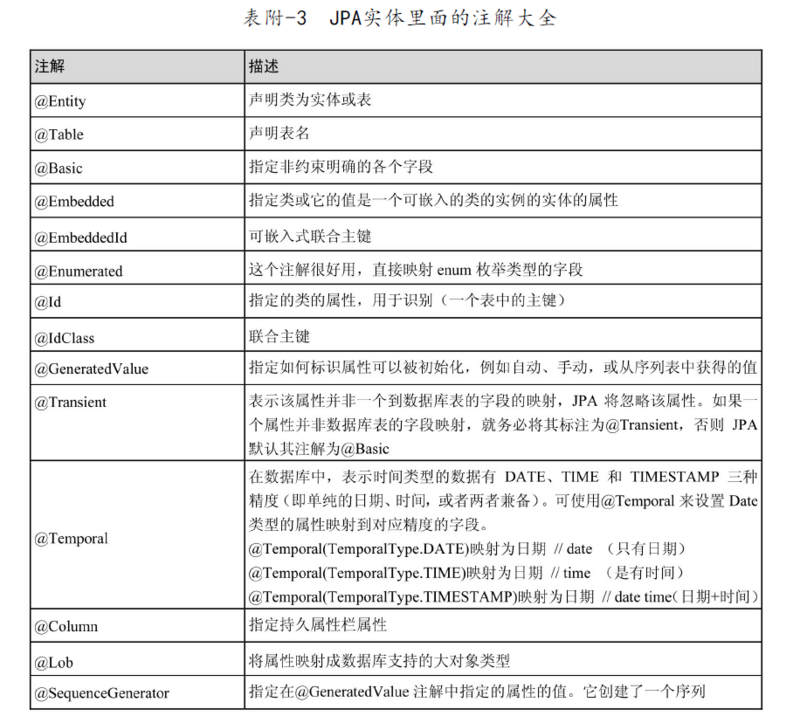
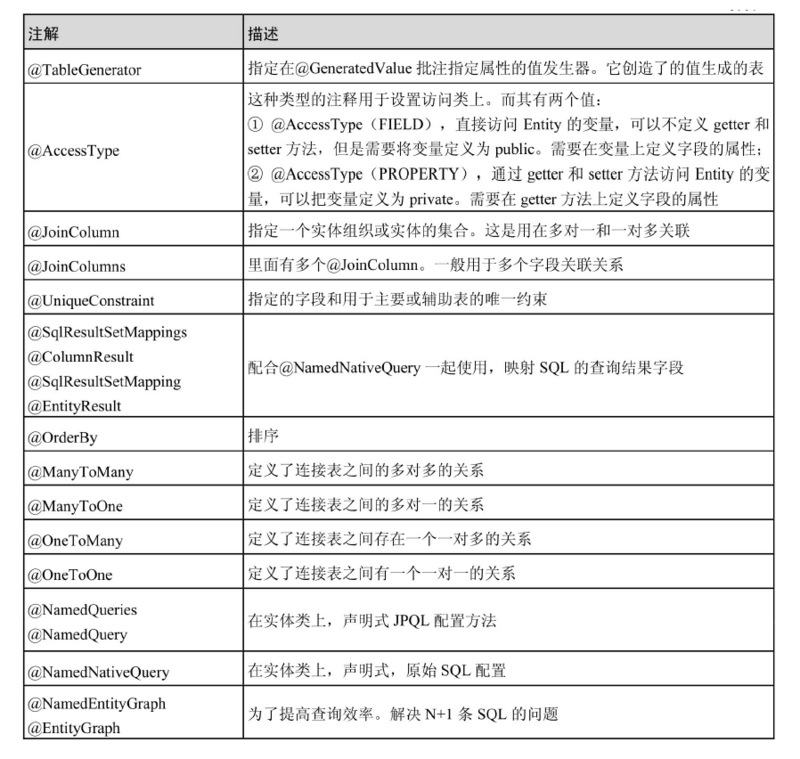

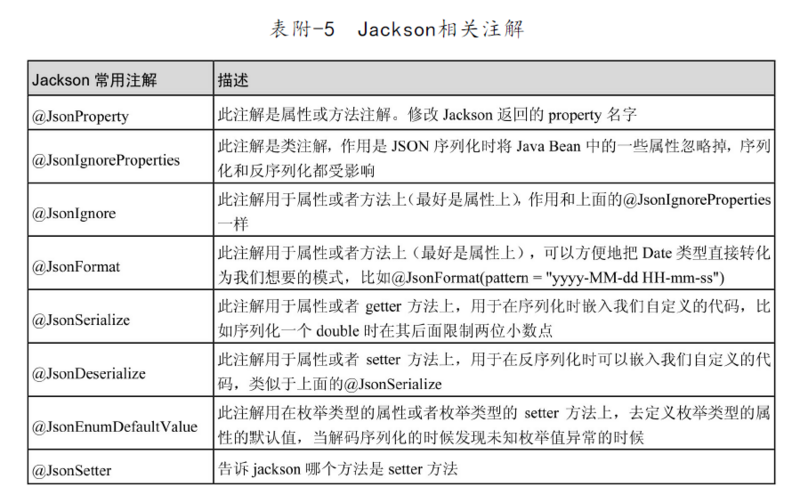
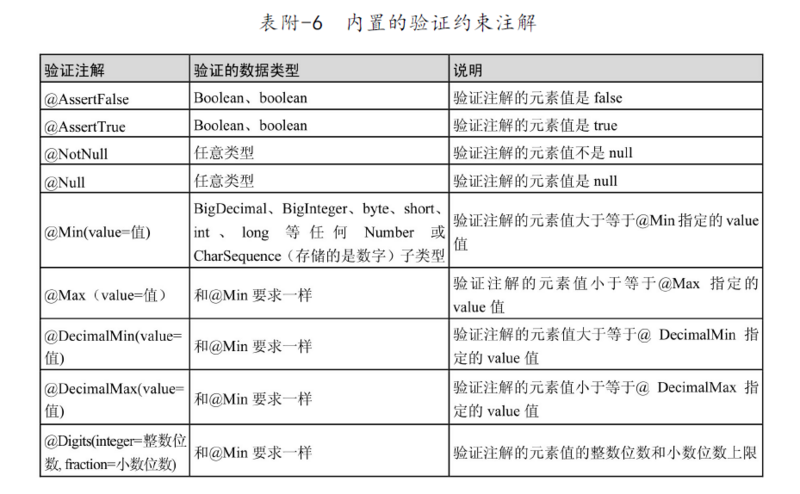
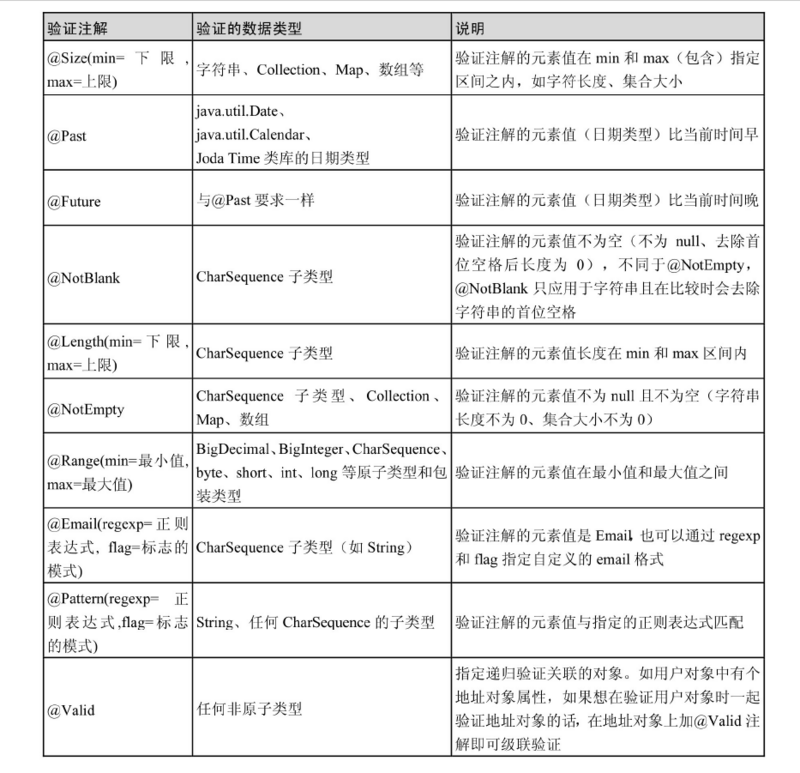
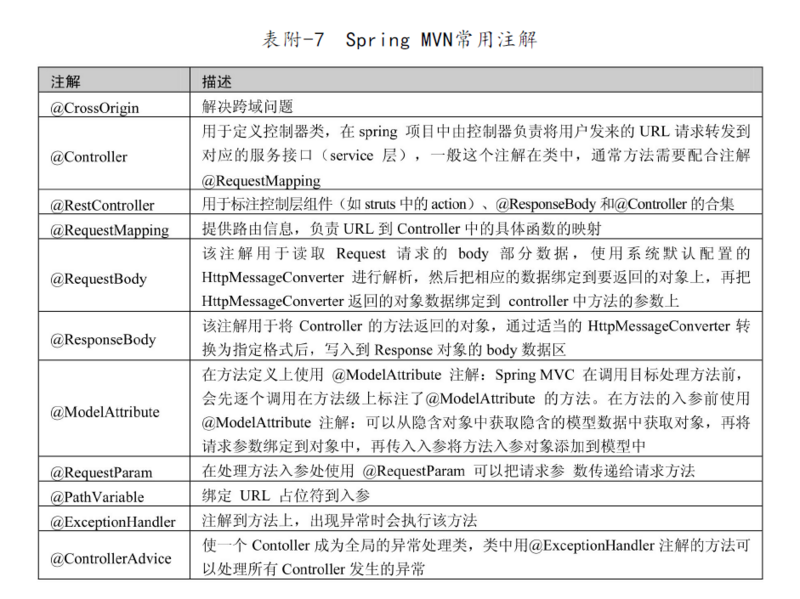

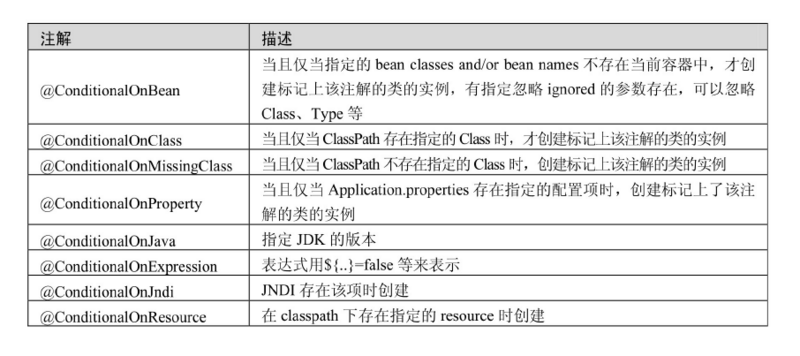
更多信息可以关注我的个人博客: 逸竹小站 或 逸竹小站
- 本文标签: 参数 ORM js src ArrayList map 需求 ACE key Persistence db 总结 Collection find http stream 数据 parse OneToOne web 分页 bean https dist 索引 sql Word 代码 Collections Jobs node final IO tar ECS zab 调试 App neToMany update 组织 Service struct build session cat 关键词 可控性 json Listeners tab 开发 executor 统计 缓存 UI CTO ManyToOne java list Action ip example springboot 数据库 博客 tk API Select Job 源码 关联查询 自动生成 家庭 entity equals 配置 时间 JPA spring value Property servlet 开源 id grep 删除 tag IDE DOM ManyToMany root
- 版权声明: 本文为互联网转载文章,出处已在文章中说明(部分除外)。如果侵权,请联系本站长删除,谢谢。
- 本文海报: 生成海报一 生成海报二











![[HBLOG]公众号](https://www.liuhaihua.cn/img/qrcode_gzh.jpg)

